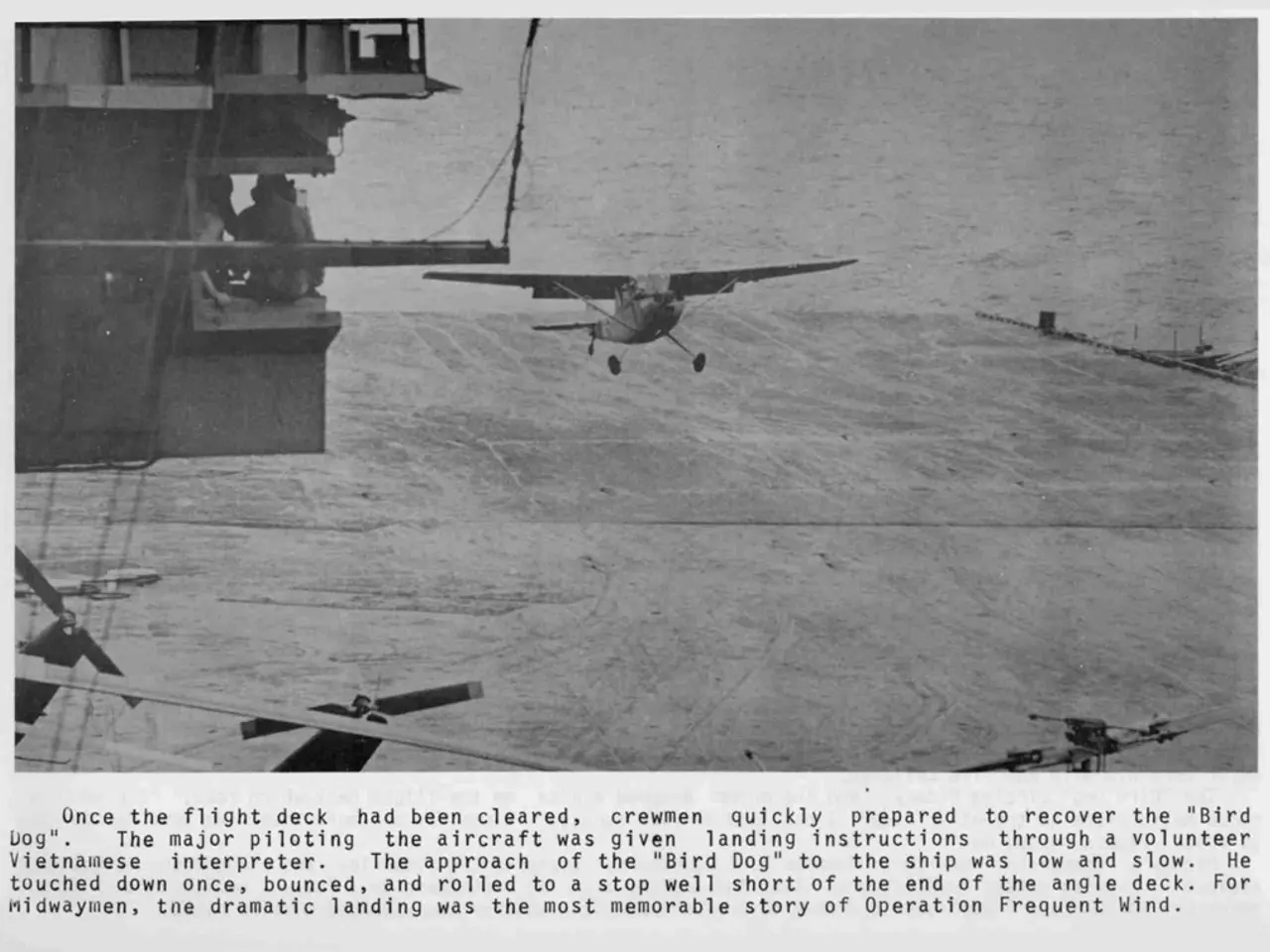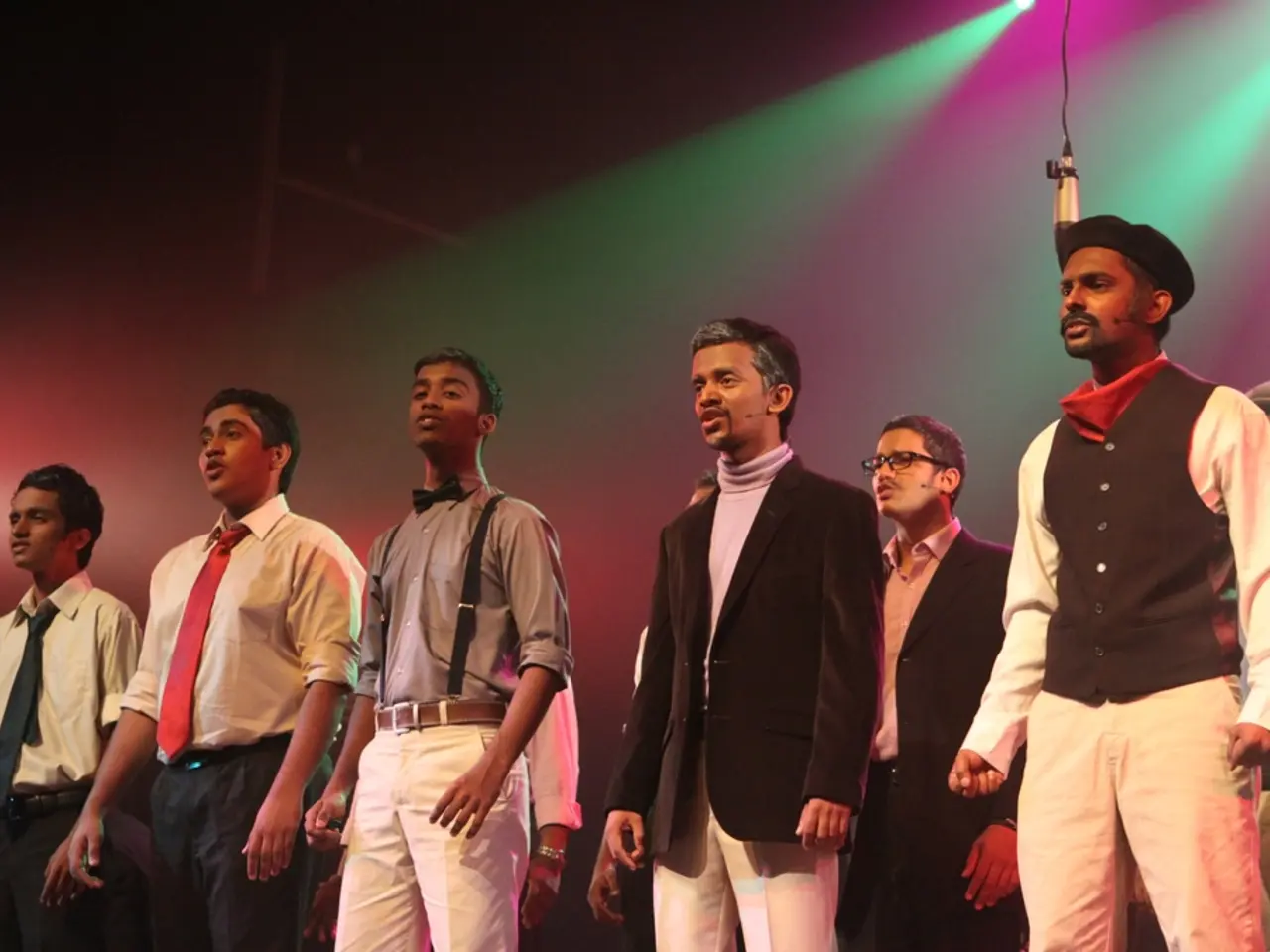Drones, equipped with wings, obliterated in the Azov and Black seas regions, totaling 10 in number.
In a recent development, Russia's air defense forces have reportedly eliminated around a hundred enemy drones, with an additional sixty-six destroyed the previous evening. This aggressive action was seen over various regions, including the Krasnodar Krai, the Azov Sea, and the Black Sea.
Over the Krasnodar Krai, five enemy Unmanned Aerial Vehicles (UAVs) were destroyed overnight, in addition to the previously reported ten. Similarly, seven Ukrainian drones were shot down overnight over the Azov Sea. These actions demonstrate Russia's ongoing efforts to safeguard its territory from aerial threats.
Russia's air defense against enemy drones relies heavily on electronic warfare (EW) systems and emerging high-energy laser systems. According to recent reporting by the Russian Ministry of Defense and related assessments in 2025, these advanced technologies are the primary countermeasures used by Russian forces. However, modern drones with autonomous AI-based navigation present a challenge because they are less vulnerable to EW interference.
To address this, Russia has tested the Posokh laser air defense system, which reportedly hit decoy drones extremely quickly at short ranges (500 meters in 0.2 seconds). The country plans to test this system at longer ranges of 1.5 kilometers soon. Another system, the Zadira laser system, can engage a single high-energy target up to 5 kilometers away but is limited to good weather conditions and cannot handle large swarms due to engaging one target at a time.
The Peresvet laser system, on the other hand, can combat groups of drones but is costly, complex to install, and available in limited numbers, limiting its overall coverage. While these technological upgrades offer promising developments in laser systems, they currently have operational constraints and limited quantity, suggesting effectiveness is promising but not yet comprehensive against large autonomous drone swarms.
The scale of drone usage and their autonomous capabilities create ongoing challenges for air defenses on both sides. Ukrainian drone attacks have become larger in scale, with drones flying higher, faster, and using onboard cameras and AI, making them harder to detect and intercept. Ukraine struggles to maintain high interception rates against these swarms, due in part to evolving tactics and decreasing Western air defense supplies.
Thus, Russia's official air defense against enemy drones shows some new promising technological developments in laser systems, but overall it remains a challenging and evolving domain where current systems may have limitations in weather dependency, targeting multiple drones, and widespread deployment.
In light of these developments, Kuban News has advised against filming drones and the operation of the air defense system in case of a drone attack. As the conflict continues, both sides are expected to further invest in and develop their air defense capabilities to counter the growing threat of drone warfare.
[1] Source for technological developments and limitations: [Insert Source Link Here] [2] Source for Ukrainian drone attacks and interception rates: [Insert Source Link Here] [3] Source for Western air defense supplies: [Insert Source Link Here]
- The increasingly complex domain of drone warfare, marked by autonomous drone swarms and evolving tactics, has necessitated significant advancements in Russia's air defense technologies, particularly in the area of high-energy laser systems.
- As both Russia and Ukraine continue to invest in and develop their air defense capabilities, the general news landscape is abuzz with reports of war-and-conflicts, politics, and the latest advancements in this ongoing struggle against the growing threat of drone-based attacks.








